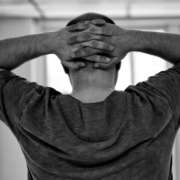Tests for Head and Neck Cancers
This was originally published by the Cancer Council here.
In this section we look at the different tests you may have to see if you have a head and neck cancer.
Learn more about these tests for head and neck cancers:
- Physical examination
- Nasendoscopy
- Laryngoscopy
- Biopsy
- Imaging tests
Physical examination
Depending on your symptoms, the doctor will examine your mouth, throat, nose, neck, ears and/or eyes. They may use a thin wooden tongue depressor to see inside the mouth more clearly. The doctor may also insert a gloved finger into your mouth to feel areas that are difficult to see, and gently feel both sides of your neck to check your lymph nodes.
The doctor may use equipment to see some areas of the head and neck, such as the nasopharynx, tongue base and pharynx.
Nasendoscopy
In this procedure, your doctor examines the nose and throat area using a thin flexible tube with a light and camera on the end. This device is called a nasendoscope. Before the nasendoscope is inserted, a local anaesthetic is sprayed into the nostril to numb the nose and throat.
You may find that the spray tastes bitter. The doctor will gently pass the nasendoscope into one of your nostrils and down your throat to look at your nasal cavity, nasopharynx, oropharynx, hypopharynx and larynx. Images from the nasendoscope may be projected onto a screen. This test may feel uncomfortable, but should not hurt.
You will be asked to breathe lightly through your nose and mouth, and to swallow and make sounds. The doctor may also take tissue samples (biopsy). A nasendoscopy usually takes a few minutes. If you need a biopsy, the test may take longer. You will be advised to not have any hot drinks for about 30 minutes after the procedure, but you can go home straightaway.
Laryngoscopy
This procedure allows the doctor to look at your throat and voice box, and take a tissue sample (biopsy). The doctor inserts a tube with a light and camera on the end (laryngoscope) into your mouth and throat. The camera projects images onto a screen. The procedure is done under a general anaesthetic and takes 10–40 minutes. You can go home when you’ve recovered from the anaesthetic. You may have a sore throat for a couple of days.
| A bronchoscope is similar to a laryngoscope, but it allows doctors to examine the airways to see if cancer is present in the lungs. The tube (bronchoscope) is inserted into the lungs via the mouth and throat. This may be done under a local or general anaesthetic. |




